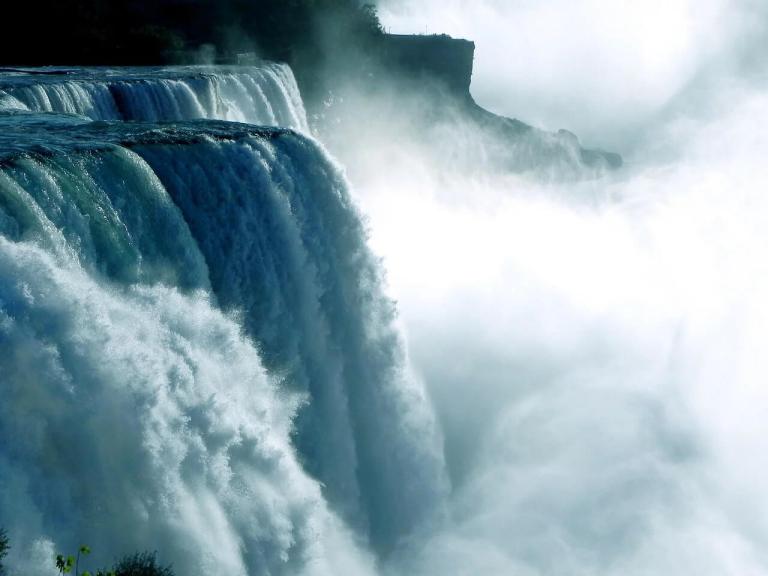Do Himalayan Salt Lamps Actually Do Anything?
Salt lamps come with some pretty big claims, but do they deliver?


422737 / Pixabay
Their amber glow is undeniably soothing, but sellers of pink salt lamps claim these home accessories are so much more than hip additions to your decor.
Depending on who you ask, you'll be told that these glowing slabs of mineral can improve sleep, fight depression, increase serotonin production, alleviate asthma, purify the air, and reduce anxiety. But outside of lending your room a stylish bohemian twist, do they actually deliver?
Salt lamps are said to produce negative ions
Salt lamp advocates claim their magic lies in the production of negative ions. At the end of the day, an ion is just an atom or a molecule that has gained or lost an electron. Put simply, those which gain an electron become negative ions; those which lose an electron become positive ions.
Salt lamp manufacturers claim that in heating the mineral's surface, salt lamps trigger a release of negative ions. Supposedly, these negative ions disburse into the air, boosting air quality and activating a myriad of positive health benefits.
Atmospheric ions are linked to health benefits
Though the homeopathic efficacy of salt lamps is up for debate, the science behind negative ions is far from unfounded. There are hundreds of published, peer-reviewed studies on the ions and their biological effects—some dating as far back as the early 1900s. Though findings, differ, most all studies agree: positive ions make us feel bad, negative ions make us feel good.
They're invisible, tasteless, and carry no odor. But once inhaled, negative ions travel to our bloodstream, triggering a series of biochemical reactions. It's believed that these biochemical reactions induce higher levels of serotonin—a mood chemical associated with happiness and alertness. Because negative ions bind to air pollutants, studies also suggest they may be effective in purifying the air.
We live in environments with fewer ions than our ancestors
Negative ions can be found anywhere where water droplets collide with each other or another wetted surface at a high velocity. They're abundant in nature, and especially copious around waterfalls, rivers, oceans, and during thunderstorms.


urformat / Pixabay
As water droplets collide, water molecules create an electrified spray that's rich with negative ions. These negative ions are then transferred to the surrounding air. The area surrounding a waterfall, for example, can reach tens of thousands of ions per cubic centimeter.
Of course, not very many of us spend our days lounging next to waterfalls or basking in the spray of ocean waves. These days, we live in environments with significantly fewer ions than our ancestors did. Because walls and ceilings shield from natural elements, the interiors of our homes and businesses especially have fewer atmospheric ions—as low as 100 or 200 per cubic centimeter.
The verdict on Himalayan salt lamps
So, negative ions are real. And a pretty hefty body of research does suggest that they can positively impact our mental and physical health. But do Himalayan salt lamps effectively manufacture negative ions?
Using a technique involving mass spectrometry, a group of Caltech researchers set out to put Himalayan salt lamps to the test. After using the device to analyze a large Himalayan salt lamp, Dr. Nathan Dalleska of Caltech's Environmental Analysis center concluded, “We’re certainly not able to detect any negative ions."
According to Caltech's Professor Jack Beauchamp, who has more than 55 years of experience studying ions and their effects, the energy required to produce negative ions is simply too high for a salt lamp to achieve. If salt lamps do produce any number of negative ions, it's certainly not enough to make a difference.
If salt lamps don't produce negative ions, what can?
At the end of the day, there's no scientific evidence that salt lamps produce any measurable number of negative ions. Interestingly, there are crystals that do produce negative ions when heated. Salt just isn’t one of them.
If you're wanting to boost your mood or improve your breathing, skip the home decor aisle in lieu of getting outdoors. Besides the potential exposure to negative ions, the exercise and sunshine will undoubtedly help.
The bottom line? A pink Himalayan salt lamp probably isn't going to cure your depression or alleviate the symptoms of asthma, but it does offer cozy ambient lighting and a stylish apothecary vibe. For many, that’s plenty reason to make a purchase.
More Science

The 6 Biggest AI Fails... So Far
Nobody's perfect - especially when it comes to algorithms.

Slightly Embarassing Signs of High Intelligence
Being intelligent isn't all smiles and giggles.

What Do Ancient Egyptian Mummies Sound Like?
Ever wondered what ancient Egyptian mummies sound like? Well, you might have found the answer today.

Healthy Tech Habits For A Better, More Creative Life
Some healthy tech habits can be useful for a better, more creative existence.

Why Lions are Secret Wimps?
From false PR to low-energy, in this article, we expose the things lions don't want you to know!.
